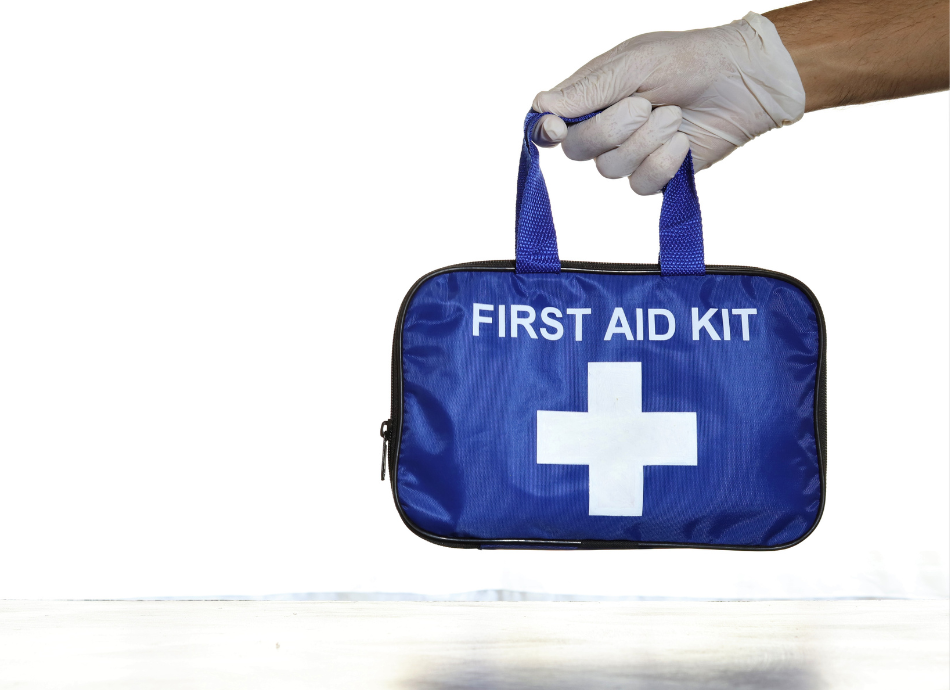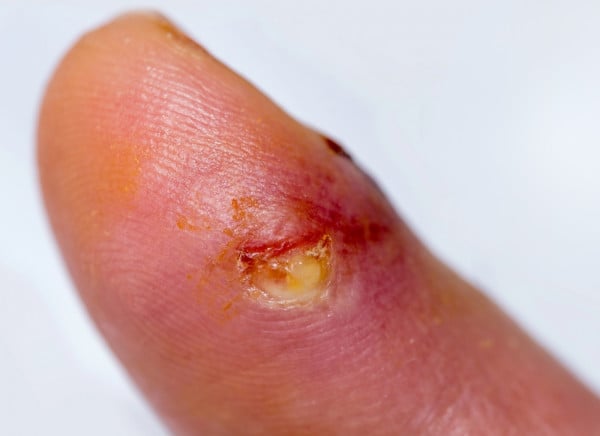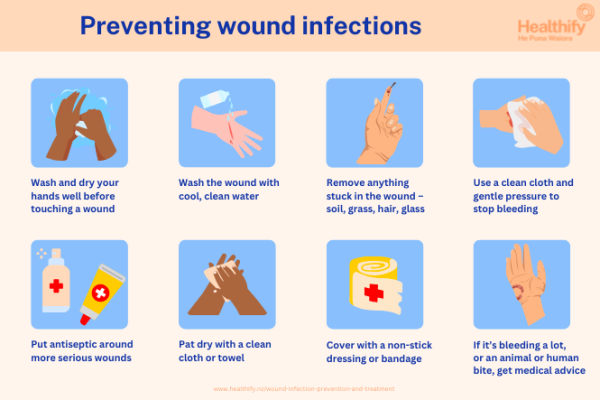Wound infection – prevention and treatment
Preventing and treating a wound infection
Key points about wound infection prevention and treatment
- When skin is broken from a wound, burn or bite it can get infected.
- An infection occurs when bacteria enter the broken skin.
- To prevent infection, it's important to clean the area well, remove any dirt, use an antiseptic and cover the wound with a dressing or plaster.
- If your wound is large, deep or won't stop bleeding, get it checked by a healthcare provider.
- Also get it checked if you're concerned it might be infected (red, hot, swollen, oozing pus).
- If you're given antibiotics for an infected wound, make sure you take the whole course as prescribed.

A wound infection happens when bacteria get into your broken skin after an injury such as a cut, burn or bite. Most minor wounds, such as cuts or grazes, heal by themselves, but there are things you can do to help prevent infection.
If the wound is infected it may be painful, red, hot, swollen or oozing pus. If an infected wound isn’t treated quickly the infection may spread to the deeper tissues beneath the skin. This spreading infection is called cellulitis. As the infection spreads, it may spread through your blood right through your body, making you feel unwell. You may get a high temperature and develop a severe infection called sepsis.
To reduce the chance of infection developing or spreading, see your healthcare provider or emergency department if:
- you have signs of a wound infection
- your wound is bleeding a lot
- your wound is large, deep or wide open
- you can’t clean out foreign material from the wound
- your wound was caused by a human or animal bite.

Image credit: Canva
There are millions of bacteria on your skin so it's not surprising that some can enter a wound or a burn site to cause an infection when the skin is broken or cut. Bacteria can also get into a wound from contaminated soil or water, or from a human or animal mouth in the case of a bite. It's also possible for bacteria to get into a surgical wound during an operation.
Some circumstances make it more likely that wounds will become infected. These include:
- If you have type 1 or type 2 diabetes.
- If the object which caused the wound was dirty and contained bacteria.
- The size and depth of the wound – larger or deeper wounds are more likely to become infected.
- If you are an older person – your skin doesn't heal as well as you get older.
- If you are very overweight.
- If you smoke.
- If your immune system doesn't work as well as normal, eg, if you are on medication such as steroids or chemotherapy, or if you have HIV/AIDS.
A wound that has become, or is becoming, infected may:
- become more painful instead of gradually improving
- look red around the edges – this red area may feel warm or hot and the redness may spread if the infection gets worse
- look swollen
- ooze a yellow material (pus) which may be smelly.
If your wound is infected you may also feel unwell in yourself, with a high temperature and aches and pains.
See your healthcare provider if you have any of these signs of possible wound infection. Read more about how to tell if a cut is infected.
There are things you can do to help prevent a wound from getting infected.
- Wash and dry your hands with soap and water before cleaning the wound.
- Clean the wound and the skin around it with cool boiled water, or tap water if it’s of drinking quality.
- Clean out any debris (eg, soil, grass, hair, bits of tooth) that might have got into the wound.
- If there are bits of foreign material that you can’t clean out or if the wound was caused by a human or animal bite get it checked by your healthcare provider or emergency department.
- Stop any bleeding by putting a clean cloth, towel or dressing on the wound, then press gently on it to apply pressure. It may take 20 to 30 minutes for the bleeding to stop. If a hand or arm is bleeding, raise it above the person's head to reduce the blood flow. If a leg is bleeding, lie the person down and raise their leg above the level of their heart.
- If the wound is bleeding a lot, is deep or if the edges are far apart, get it looked at by your healthcare provider or hospital emergency department.
- Use an antiseptic around the wound to help keep bacteria out. You don’t need to use an antiseptic for minor cuts and grazes as it may damage your skin and slow down the healing process.
- Dry the area by patting it gently with a clean towel or cloth.
- Put a sterile dressing or plaster over the wound. Don’t use gauze or anything that might stick to the wound.
- Change the dressing as often as needed to keep it clean and dry. Make sure you wash your hands before you change the dressing.
- Keep a close eye on the wound in case it does get infected. See above for signs of a wound infection.

Image credit: Healthify He Puna Waiora
If you think your wound might be infected, ask your doctor or nurse to have a look at it. They'll advise you on how to treat it and whether you need any medicine or other type of treatment. You might need more thorough wound cleaning, stitches or antibiotics.
They will also tell you what you can do at home to care for your infected wound. If they prescribe antibiotics it's important that you take them as advised and take the full course even if you're feeling better and your wound is healing.
You may also need a tetanus injection if you haven’t been fully vaccinated in the past or if it’s more than 10 years since your last tetanus injection, or more than 5 years if the wound is dirty and deep.
Read about how wounds heal and what you can do help the healing process.
The following links provide further information about wound infections. Be aware that websites from other countries may have information that differs from New Zealand recommendations.
Cuts, grazes and puncture wounds(external link) Health New Zealand | Te Whatu Ora
Wounds(external link) DermNet, NZ
Eating well for wound healing(external link) Health New Zealand | te Whatu Ora, NZ
Wounds – how to care for them(external link) Better Health Channel, Australia
Skin infections – what to do(external link) KidsHealth, NZ
Brochures
Looking after your child’s skin and treating skin infections(external link) Ministry of Health | Manatū Hauora and Workbase Education Trust, NZ
Checking skin infections and things you could ask your child’s doctor or nurse(external link) Ministry of Health | Manatū Hauora and Workbase Education Trust, NZ
Cuts, scratches and grazes(external link) Ministry of Health | Manatū Hauora and Workbase Education Trust, NZ
Healthy skin and what causes skin infections?(external link) Ministry of Health | Manatū Hauora and Workbase Education Trust, NZ
References
- Wound Infections(external link) 3D Community HealthPathways, NZ, 2024
- Tetanus-prone wound management(external link) 3D Community HealthPathways, NZ, 2020
- Infected wounds(external link) Patient Info, UK, 2020
Credits: Healthify editorial team. Healthify is brought to you by Health Navigator Charitable Trust.
Reviewed by: Dr Emma Dunning, Clinical Editor and Advisor
Last reviewed:





